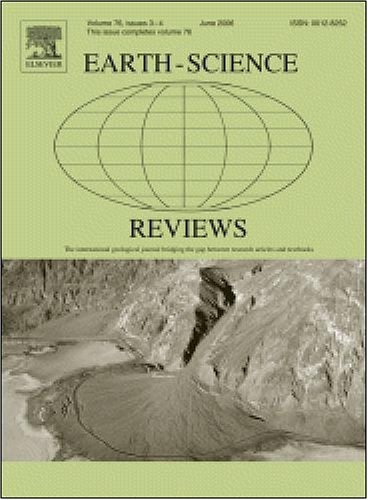Triassic terrestrial tetrapod faunas of the Central European Basin, their stratigraphical distribution, and their palaeoenvironments
IF 10.8
1区 地球科学
Q1 GEOSCIENCES, MULTIDISCIPLINARY
引用次数: 0
Abstract
Since the early nineteenth century, the Central European Basin (CEB) has been a historically important region for the study of terrestrial tetrapods from the Triassic Period, and continues to yield a wealth of new finds. A review of the fossil evidence permits the recognition of new patterns of diversity for various clades during the recovery period following the end-Permian mass extinction. Unfortunately, the fossil record for tetrapods in the CEB across the Permian–Triassic boundary is virtually non-existent. The lowermost Triassic strata are almost entirely devoid of tetrapod fossils in the CEB, which is in marked contrast with coeval terrestrial deposits in higher-palaeolatitude regions such as South Africa. Temnospondyls were present in many Olenekian horizons and diversified at the beginning of the Anisian, attaining their greatest diversity in the late Ladinian, probably as a response to an increase in available freshwater environments and tolerance of fluctuating salinity in at least some forms. Among amniotes, only procolophonoids have been found in both Olenekian and Anisian strata in Germany, in each instance with two taxa, and they persisted into the late Ladinian. The ichnofaunas tell a rather different (partly complementary) story. Especially in the Olenekian, the poor body fossil record for tetrapods contrasts sharply with the abundance and high diversity of tetrapod ichnofossils, particularly those produced by archosauromorph reptiles. Large tetrapod tracks (Protochirotherium) suggest that large-bodied archosauriforms were present, but no skeletal remains of such forms have been recovered from known coeval horizons in the CEB to date. Strata of the lower Anisian have recently yielded procolophonids, rhynchosaurs, tanysaurians, a eucrocopodan archosauriform, a ‘sail-backed’ poposauroid pseudosuchian, and a drepanosauromorph. For this time interval, the body fossil record (with three temnospondyl and seven amniote taxa) approaches the diversity of the rich tetrapod track record. The differences between Middle and Late Triassic faunas are not as profound as had traditionally been assumed. Whereas there was an almost complete replacement of temnospondyl taxa except for the long-ranging Gerrothorax pulcherrimus, the composition of terrestrial amniote assemblages appears to have changed more gradually from the Anisian to the Norian. The Ladinian of southern Germany has yielded a wide range of taxa not otherwise represented in the CEB nor elsewhere. This includes several taxa of lepidosauromorphs including a rhynchocephalian, a colognathid, a trilophosaurid, a shell-less stem-turtle, an owenettid and a procolophonid, and four different archosauriform taxa. A recently discovered late Carnian assemblage from the Stuttgart Formation, which is currently under study, includes small diapsids resembling those from the Ladinian. Diverse Early and Late Triassic microvertebrate assemblages have been described from Poland in recent years, and identification of comparable depositional environments elsewhere in the CEB would undoubtedly lead to the discovery of many additional small-sized tetrapod taxa. In summary, the CEB provides an excellent record for studying the evolution of Triassic terrestrial tetrapod faunas along with environmental changes over much of that period.
求助全文
约1分钟内获得全文
求助全文
来源期刊

Earth-Science Reviews
地学-地球科学综合
CiteScore
21.70
自引率
5.80%
发文量
294
审稿时长
15.1 weeks
期刊介绍:
Covering a much wider field than the usual specialist journals, Earth Science Reviews publishes review articles dealing with all aspects of Earth Sciences, and is an important vehicle for allowing readers to see their particular interest related to the Earth Sciences as a whole.
 求助内容:
求助内容: 应助结果提醒方式:
应助结果提醒方式:


